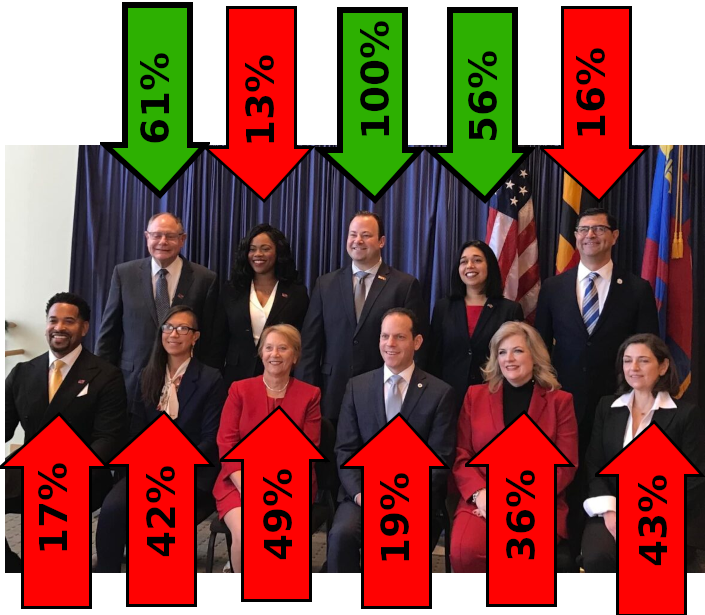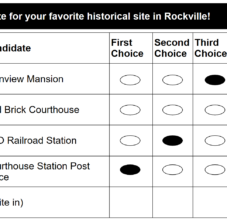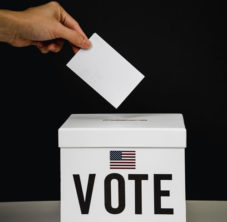Going back to November 7, 2023, Council Member Evan Glass expressed his support for ranked-choice voting.
It’s Election Day!
Make sure to vote if there’s an election in your community.
And let’s continue working to ensure that there’s ranked choice voting in more communities next year!#electionday #rankedchoicevoting #rcv #democracy pic.twitter.com/zvYS2O4NFN
— Councilmember Evan Glass (@CMEvanGlass) November 7, 2023
I’ve written several times about the wholesale voting rights violations on the County Council and the Board of Education. For example, in our last round of primaries for the county council members, only three received a majority vote: Friedson, Katz, and Fani-González. No other winner of a primary race won the necessary 50% (district reps) or 20% (at-large reps). Those other nine members relied on voting rights violations to win their primary contests.
Similarly, the Board of Education is elected entirely at-large using deceptive, fake “district representatives” that appear on everyone’s ballots.
Folks, there isn’t one voting rights activist who condones these distortions.
Because most of our elected officials rely on block voting by an aggressive demographic, all the resources and policies are diverted in that demographic’s favor: all the Purple Line stops are below the beltway, no new Metro stops since 1998, forced LGBT studies costing the school district millions in legal fees, and teachers who are defenseless against stalking principals. The list of distortions goes on and on.
The only way to reform our elections, and subsequent representation, is to change the electoral process.
Why would Evan Glass express support for RCV? After all, he won only 19% of the votes in the at-large primaries, and 20% are needed for a win in a four-member race.
First of all, dedicated, popular council members such as Mr. Glass are sold short by their plurality wins. No matter how hard he works and how talented he is, his 19% win is illegitimate. In contrast, the chances that he would break the 20% barrier in an instant runoff are very high. My guess is that Mr. Glass thinks similarly, which is why he endorses RCV. Would the other three at-large members (Jawando, Albornoz, and Sayles) also endorse RCV? I presume that if they feel they can achieve the 20% threshold in a runoff, they would endorse RCV; if they feel threatened by that threshold, they would oppose it. The same is true for the district representatives and their necessary 50% thresholds. (Hopefully my presumptions are incorrect, and the entire county council endorses some form of electoral reform, RCV or otherwise, to allow a true expression of voter preference.)
A note to my many Republican friends:
It’s no secret that Republicans as a group are somewhere between evasive and hostile to RCV. I certainly understand the suspicion, particularly because our down-county Democrats have been relying on invidious voting-rights violations to maintain their grip on budgets and policies, and also to block you and your constituents out of office. Nevertheless, assuming the four-member at-large contingent remains on the county council, then RCV will guarantee proportional representation within that contingent. FairVote.org describes the situation in New York, 1941:
Similarly, in New York City, proportional ranked choice voting cut off the stranglehold previously held by the Democratic Party in the city. In the last election before adoption of choice voting, Democrats won 99.5% of the seats on the Board of Alderman with only 66.5% of the vote. Under ranked choice voting in 1941, Democrats won 65.5% of the seats with 64% of the vote, a much fairer result.
Multi-member RCV won’t guarantee a Republican as the county executive or as a district representative. However, it will guarantee proportional representation in all the at-large elections on the county council and the board of education. The proportional representation can be manifest in more diverse representation along party lines, geographic lines, or ideological lines. For that reason alone RCV deserves a fair consideration.




